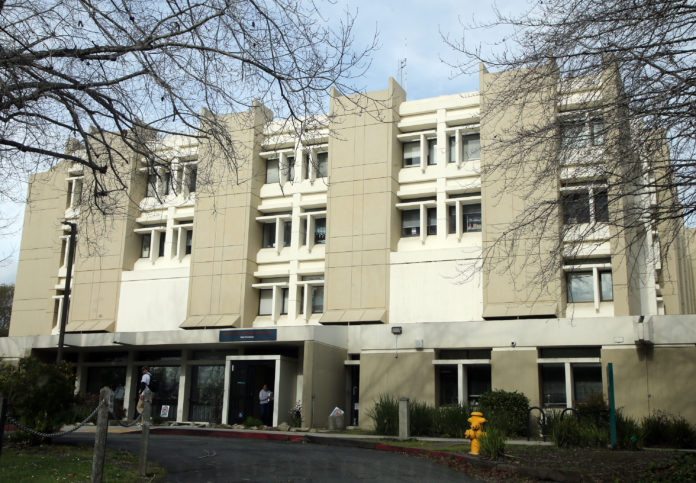
After a meeting that began Wednesday evening and stretched into the early-morning hours Thursday, the Pajaro Valley Unified School District Board of Trustees agreed to a series of cuts that trim more than $5 million from the district’s budget.
The first round includes $750,000 to the District Office and $600,000 to academic coordinator positions, also called assistant principals. It also included $1.3 million to elementary school release teacher positions.
That passed 5-1, with Trustee Gabriel Medina dissenting. The Trustee Area 1 seat formerly occupied by Kim De Serpa has not yet been filled.
For the second round, the trustees made separate $500,000 cuts to intervention teachers, mental health clinicians and socio-emotional counselors. It passed 4-2, with Medina and Trustee Jessica Carrasco dissenting.
The need for the cuts comes from the loss of one-time Elementary and Secondary School Emergency Relief (ESSER) funds, which the state provided during the Covid-19 pandemic to help students with issues related to online instruction.
Those dollars are sunsetting this year, and PVUSD must now “right-size” after using the one-time funds to pay for ongoing expenses such as hiring new staff.
PVUSD Superintendent Heather Contreras warned that waiting to make the cuts—or to not make them—would force the district to deficit spend, and face possible eventual state takeover if the budget picture worsens.
It would also make future reductions more difficult, as the district is predicted to lose $10 million next year due to declining enrollment, Contreras said.
The votes came after the trustees mulled recommendations by the district’s 24-member Sustainable Budget Team, which met eight times late last year to help the district make the cuts.
In explaining his no-votes, Medina said that he couldn’t support the team’s recommendations.
“Reducing the budget by cutting essential services like social-emotional support is shortsighted, and will cost us more in the long run,” he said. “Failing to invest in these critical programs now means we risk higher expenses later as we address the long-term effects of untreated bullying, anxiety, and depression.”
Students are recovering from the 2023 floods, he said, which compounds the challenges they already face. “Without adequate support, we risk higher dropout rates, decreased attendance, and increased disciplinary issues—all of which carry significant financial consequences for our district. We must prioritize the well-being of our students to build a stronger future for both them and our community.”
Carrasco agreed.
“I can’t vote for these choices, because I ran a campaign on empowering students, and I don’t see these choices doing that,” she said.
It is unclear how many positions will now have to be cut. Contreras said that district officials will bring a resolution to the board at either the Feb. 12 or March 5 meeting.
The cuts to release-time teachers will not mean a reduction to release time in the classroom, Contreras said.
Teacher contracts mandate that they get a certain number of hours for lesson plans and preparation. Release teachers take their classes for one-hour increments to give lessons such as science, music, art and PE.
Contreras said that the district hopes to offset reductions to mental health services by looking to other agencies that provide similar services through their own grants.
Still, dozens of people addressed the board, most of them expressing concern that the loss of mental health clinicians and socio-emotional counselors will have a dire effect on students.
“Cutting funding to mental health will absolutely put our students’ lives at risk,” said Watsonville High School history teacher Bobby Pelz.
Instead, Pelz said, the district should cut the School Resource Officer program, which places armed law enforcement officers on campuses with a mental health clinician.
“I think it sends the wrong message that we would rather invest in control than invest in support,” he said.
Aptos High School senior Corbin Joao Bettencourt urged the board not to cut mental health services, predicting that the need for such services will likely increase as the conservative-leaning government increasingly attacks the LGBTQ community.
“As someone who has had depression and nearly tried suicide, I find it insulting, disrespectful and infuriating that you would even suggest taking away mental health services from my school and those who need it,” he said. “The mental health professionals at my school helped me a lot. In fact, if not for them I would be dead.”
Renaissance High junior Yareli Garcia agreed, saying that her school’s clinician helped her with her own struggles.
“Mental health clinicians have to be here for me, for our students and for many other people in our future,” she said.
Socio-emotional counselor Christina Souza said she was excited to come to the district when she learned of its focus on mental health services for students.
She says cutting the services will affect many aspects of their lives.
“The research is overpowering on the impacts that a sustainable K-12 (Social and Emotional Learning) program … has on academics, on college-going, on test scores,” Souza said. “It goes on and on. If a student is not well, they cannot learn, if they don’t feel safe, they cannot learn, if they don’t have a person, a community, somebody at the school they know will be there for them, they can’t learn.”
Pajaro Valley Federation of Teachers President Nelly Vaquera-Boggs joined many in the room who said that the nearly $2 million that goes to Pajaro Valley Prevention and Student Assistance would be better spent with the district’s own mental health professionals.
“This district is deciding to make these austerity measures on the backs of our students,” she said. “PVPSA doesn’t serve all our students.”












Dave,
What going to happen to school enrollment after the mass deportations start?
Doubt there will be overcrowded classrooms next year
What cha think Dave?